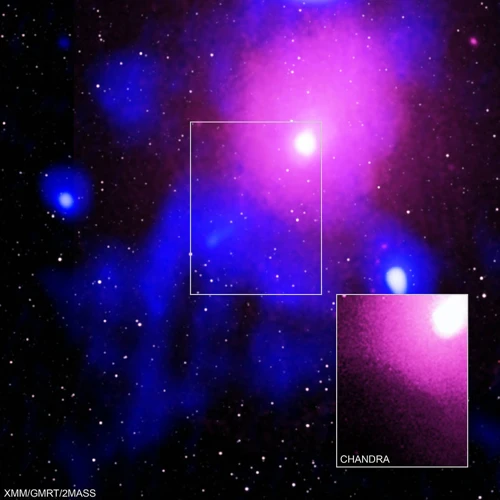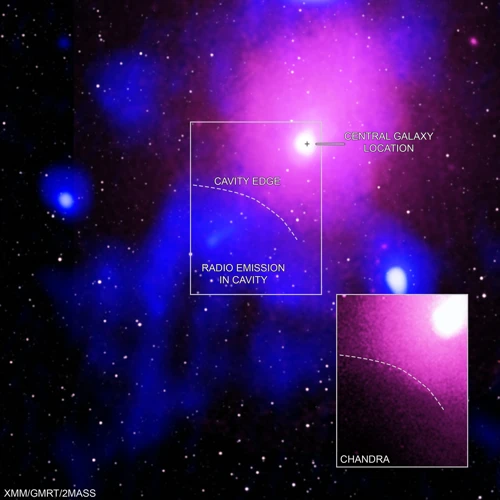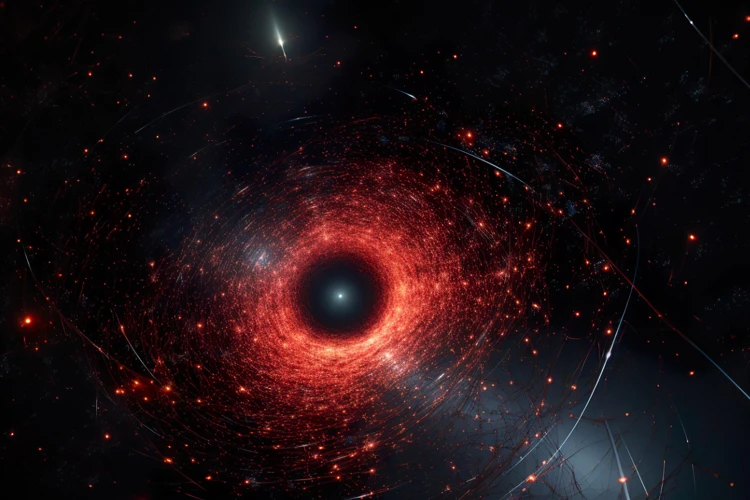It is a puzzling enigma that has baffled scientists for decades—the mystery of dark matter. The universe, as we know it, is composed of ordinary matter, but there seems to be something else lurking in the shadows, making up the majority of matter in the cosmos. This invisible and elusive substance, aptly named dark matter, defies detection and comprehension, leaving scientists with more questions than answers. In this article, we will delve into the strange case of dark matter in the universe, exploring its concept, the evidence supporting its existence, the ongoing hunt for its particles, alternative theories and debates surrounding it, its role in shaping the cosmos, and the unanswered questions that drive future research. So, brace yourselves for a journey into the mysterious depths of the universe as we attempt to unravel the secrets of dark matter.
The Concept of Dark Matter

Dark matter is a concept that challenges our understanding of the universe. According to current theories, dark matter is a form of matter that does not emit, absorb, or reflect light, hence its invisibility to our telescopes and instruments. The existence of dark matter is inferred from its gravitational effects on visible matter, such as stars and galaxies. Scientists believe that dark matter makes up about 85% of the matter in the universe, outweighing ordinary matter by a large margin. The nature of dark matter remains largely unknown, as it does not interact through the electromagnetic force like normal matter. Instead, it is thought to interact primarily through gravity. Various hypotheses have been proposed to explain dark matter, including the presence of exotic particles, such as weakly interacting massive particles ( WIMPs) and axions. Additionally, alternative theories propose modifications to the laws of gravity on large scales to explain the observed gravitational effects attributed to dark matter. Despite extensive research and observational efforts, the true identity of dark matter continues to elude us, leaving scientists captivated by its mystery and searching for answers to understand the fabric of the universe.
Evidence for Dark Matter

The existence of dark matter is supported by a range of compelling evidence that provides clues to its presence in the universe. One such line of evidence is gravitational lensing, where the gravitational pull of dark matter causes light to bend as it passes through galaxies or galaxy clusters. This phenomenon has been observed and verified through careful measurements, offering strong support for the existence of dark matter. Another piece of evidence comes from the growth of cosmic structures. Computer simulations that incorporate dark matter into their models can accurately reproduce the observed structure and distribution of galaxies in the universe. Additionally, there are observational anomalies in the movement of stars and galaxies that cannot be explained by the gravitational effects of visible matter alone, pointing to the presence of unseen dark matter. These cumulative lines of evidence paint a picture of a universe with a hidden component that vastly outweighs the visible matter, emphasizing the significance of understanding dark matter in our quest to unravel the mysteries of the cosmos.
Gravitational Lensing
Gravitational lensing is a powerful phenomenon that provides evidence for the existence of dark matter. This phenomenon occurs when the gravitational field of a massive object, such as a galaxy or a galaxy cluster, bends the path of light from a background object, distorting and magnifying its appearance. The gravitational pull of dark matter, which is believed to be present in these massive structures, contributes significantly to the lensing effect. By studying the gravitational lensing of distant galaxies, scientists can infer the distribution of dark matter in the foreground objects.
The concept of gravitational lensing can be illustrated with an example:
Imagine a distant galaxy emitting light that passes near a massive galaxy cluster on its way to Earth. The enormous gravitational pull of the cluster, including the dark matter contained within it, bends the path of the light rays, causing the image of the distant galaxy to be distorted and stretched into arcs or multiple images. This phenomenon, known as strong gravitational lensing, serves as a direct indication of the presence of mass, including dark matter, in the galaxy cluster.
In addition to strong gravitational lensing, there is also weak gravitational lensing, which refers to the subtle distortions of background galaxy images caused by the gravitational effects of dark matter along the line of sight. By statistically analyzing the weak lensing signal from a large number of galaxies, scientists can construct maps of the underlying dark matter distribution in various cosmic structures.
Gravitational lensing not only provides valuable evidence for the existence of dark matter but also helps scientists map the distribution of dark matter on large scales. By combining information from gravitational lensing observations with other cosmological data, such as the cosmic microwave background radiation, scientists can gain a better understanding of the role of dark matter in shaping the large-scale structure of the universe. This fascinating phenomenon continues to play a crucial role in unraveling the mysteries of dark matter and expanding our knowledge of the cosmos.
(To learn more about cosmic phenomena, you can read about the solar eclipse and witnessing the Moon’s shadow.)
Growth of Cosmic Structures
The growth of cosmic structures is a fascinating area of research directly related to the presence of dark matter in the universe. Dark matter plays a critical role in the formation and evolution of galaxies, galaxy clusters, and large-scale structures. As ordinary matter interacts gravitationally with dark matter, it undergoes a process called hierarchical structure formation. Initially, tiny fluctuations in the density of dark matter caused by primordial conditions begin to grow and amplify over time. Gravity pulls matter towards these regions of higher density, leading to the formation of cosmic structures. Dark matter acts as a scaffold, providing the gravitational framework for ordinary matter to gather and form galaxies. It is the gravitational pull of dark matter that enables gas clouds to collapse, triggering the formation of stars within galaxies. The distribution of dark matter influences the cosmic web, the intricate network of filaments and knots that connect galaxies on large scales. These structures can be observed through techniques like cosmic microwave background radiation mapping and galaxy surveys, shedding light on the underlying distribution of dark matter and providing insights into the growth and evolution of the universe. Understanding the growth of cosmic structures not only deepens our appreciation for the complexity of the cosmos but also offers valuable clues in our quest to unravel the secrets of dark matter.
Observational Anomalies
Observational anomalies in the behavior of celestial objects have provided intriguing evidence for the existence of dark matter. One such anomaly is the rotation curves of galaxies. According to the laws of classical physics, the rotational speed of stars within a galaxy should decrease as the distance from the galactic center increases. However, observations have shown that stars on the outskirts of galaxies are moving at unexpectedly high speeds, defying the predicted decrease in velocity. This discrepancy suggests the presence of additional mass that cannot be accounted for by visible matter alone. Another anomaly is the phenomenon of gravitational lensing, where light from distant objects is bent by the gravitational field of a massive object in its path. Gravitational lensing has been observed in numerous instances, such as the bending of light around galaxy clusters and the distortion of the cosmic microwave background radiation. The extent of the gravitational lensing observed indicates the presence of significant amounts of unseen mass, pointing towards the existence of dark matter. These observational anomalies serve as crucial pieces of evidence that support the concept of dark matter and challenge our current understanding of the universe, driving scientists to unravel the mysteries hidden within the cosmos.
The Hunt for Dark Matter Particles

The hunt for dark matter particles is a thrilling endeavor in the world of astrophysics. Scientists have proposed various candidates for dark matter, including WIMPs (weakly interacting massive particles) and axions. To search for these elusive particles, researchers have developed sophisticated experiments and detectors. Underground detectors, such as the Large Underground Xenon (LUX) experiment, aim to capture the rare interactions between dark matter particles and ordinary matter using highly sensitive detectors buried deep underground to shield them from background radiation. Particle colliders, like the Large Hadron Collider (LHC), accelerate subatomic particles to high energies, simulating conditions similar to the early universe, in the hopes of producing and detecting dark matter particles. These experiments provide valuable insights into the properties and interactions of dark matter as scientists unravel the true nature of this cosmic enigma. The search for dark matter particles continues to push the boundaries of scientific knowledge, taking us closer to understanding the mysteries of the universe we inhabit.
WIMPs and Axions
WIMPs (Weakly Interacting Massive Particles) and axions are two of the most prominent candidates for dark matter particles. WIMPs are hypothetical particles that are believed to interact only weakly with ordinary matter, making them difficult to detect. They are thought to have a mass several times that of a proton and are predicted by various theories, such as supersymmetry. If WIMPs exist, they could have been produced in the early universe and could still be present today. Scientists are conducting experiments using underground detectors to search for the rare interactions between WIMPs and normal matter. These detectors are buried deep underground to shield them from cosmic rays and other background radiation that could interfere with the detection process.
Axions, on the other hand, are theoretical particles that were initially proposed to solve a completely different problem in particle physics called the strong CP problem. However, it was later realized that axions could also be a potential candidate for dark matter. Axions are extremely light and have peculiar properties that allow them to convert into photons in the presence of magnetic fields. This unique feature opens up the possibility of detecting axions indirectly by searching for the conversion of axions into detectable photons in specially designed experiments. These experiments involve powerful magnets and carefully calibrated instruments to study the effects of axions interacting with the electromagnetic field.
Both WIMPs and axions are actively being researched, and scientists are pursuing a variety of experimental methods to conclusively prove or disprove their existence as dark matter particles. The findings from these experiments are essential in unraveling the mysterious nature of dark matter and shedding light on the fundamental structure of the universe.
Underground Detectors
Underground detectors play a crucial role in the hunt for dark matter particles. These detectors are typically located deep underground in order to shield them from cosmic rays and other sources of noise that can interfere with the delicate measurements. One type of underground detector is the liquid xenon detector, which relies on the interaction of dark matter particles with xenon atoms. When a dark matter particle collides with a xenon atom, it produces tiny flashes of light and electrical charges, which can be detected by highly sensitive instruments. Another type of detector is the scintillating crystal detector, which uses crystals such as sodium iodide or cesium iodide. When a dark matter particle interacts with the crystal, it releases energy that causes the crystal to emit flashes of light, which can be detected by photomultiplier tubes. These underground detectors are designed to be extremely sensitive, capable of detecting even the faintest signals produced by potential dark matter interactions. They are essential tools in the ongoing search for dark matter particles, providing valuable data that can help scientists unravel the mystery of the universe’s hidden components.
Particle Colliders
Particle colliders play a crucial role in the hunt for dark matter particles. These state-of-the-art machines, such as the Large Hadron Collider (LHC) at CERN, are designed to accelerate particles to incredibly high speeds and collide them together. By doing so, scientists can recreate the conditions that existed in the early universe, where dark matter may have interacted with ordinary matter. The hope is that these high-energy collisions will produce detectable signatures of new particles, including potential candidates for dark matter. The LHC, for instance, has been instrumental in the search for dark matter particles by colliding protons at unprecedented energies. Physicists carefully analyze the data from these collisions, looking for any hints of missing energy or new particles that could be indicators of dark matter interactions. While these experiments have not yet directly detected dark matter, they have placed constraints on the types of particles that dark matter could be composed of. With future upgrades and the development of even more powerful particle colliders, such as the proposed Future Circular Collider (FCC), scientists hope to increase their chances of discovering the true nature of dark matter and solving one of the universe’s most perplexing mysteries.
Alternative Theories and Debates

As scientists delve deeper into the mystery of dark matter, various alternative theories and debates have emerged, challenging the traditional concept of dark matter. One set of alternative theories suggests modifications to gravity itself to explain the observed gravitational effects attributed to dark matter. These modified gravity theories propose that the laws of gravity on large scales are not accurately described by Einstein’s general theory of relativity. According to these theories, the effect of gravity weakens at larger distances, thereby mimicking the presence of invisible matter. Another intriguing hypothesis proposes that dark matter may actually be primordial black holes, small and dense celestial objects formed in the early universe. These black holes, if they exist, could account for the observed gravitational effects without the need for exotic dark matter particles. While these alternative theories spark lively debates within the scientific community, further research and observational data are essential to determine the true nature of dark matter and resolve these intriguing questions that continue to shape our understanding of the cosmos.
Modified Gravity Theories
Modified gravity theories offer an alternative explanation to the concept of dark matter. These theories propose modifications to the laws of gravity on large scales, such as the well-known theory of general relativity developed by Albert Einstein. According to these theories, the observed gravitational effects attributed to dark matter can be explained by tweaking the laws of gravity rather than invoking the existence of unseen particles. One such modified gravity theory is the Modified Newtonian Dynamics ( MOND) proposed by physicist Mordehai Milgrom in the 1980s. MOND suggests that gravity behaves differently in the low acceleration regime, deviating from the classical inverse-square law. This modified behavior of gravity could explain the observed galactic dynamics and rotation curves without the need for dark matter. Another example is the theory of Modified Einsteinian Gravity ( MOG), which extends general relativity by introducing additional gravitational fields. MOG attempts to explain various astronomical observations, including the apparent gravitational effects attributed to dark matter. While modified gravity theories present intriguing possibilities, they face challenges in providing a complete and consistent explanation for all the observational evidence related to dark matter. Further investigations and ongoing research are necessary to evaluate the validity and applicability of these alternative theories in understanding the nature of dark matter.
Dark Matter as Primordial Black Holes
Dark matter as primordial black holes is a fascinating and debated concept in the realm of astrophysics. Primordial black holes are hypothetical black holes that could have formed in the early stages of the universe, stemming from the extreme density fluctuations during the cosmic inflationary period. These black holes, if they exist, would have been created before the formation of stars and galaxies and are distinct from the black holes formed from stellar collapse.
One intriguing possibility is that primordial black holes could account for a significant portion or even the entirety of dark matter in the universe. These black holes would have masses ranging from tiny objects to those comparable to stellar-mass black holes. Such black holes could be difficult to detect directly, as they would not emit significant amounts of radiation. However, their presence could be inferred through gravitational lensing effects, where the black hole’s gravity bends and distorts the light coming from distant objects. This phenomenon could lead to observable distortions in the images of background stars and galaxies.
The idea of dark matter as primordial black holes has gained renewed interest in recent years due to a reexamination of the data from gravitational wave detections and other astrophysical observations. These studies suggest that primordial black holes could potentially explain certain phenomena, such as the mysterious origins of supermassive black holes at the centers of galaxies. However, the primordial black hole hypothesis is not without its challenges and uncertainties. It is still an active area of research and investigations are ongoing to test and refine this intriguing idea.
While the concept of dark matter as primordial black holes offers an alternative explanation to the existence of dark matter, it is important to note that other theories, such as the existence of weakly interacting massive particles ( WIMPs) and axions, still dominate scientific discourse. Exploring the possibility of dark matter as primordial black holes not only expands our understanding of the universe but also highlights the vastness of the cosmic mysteries that continue to captivate scientists and inspire further exploration.
The Role of Dark Matter in the Universe

Dark matter plays a crucial role in shaping the universe as we know it. Its gravitational influence governs the dynamics of galaxies, clusters, and even the large-scale structure of the cosmos. One of the key phenomena that highlight the significance of dark matter is the rotation curves of galaxies. Observations have revealed that the rotational speeds of stars within galaxies remain constant or even increase as the distance from the galactic center increases, defying our expectations based solely on visible matter. This behavior suggests the presence of additional mass, attributed to dark matter, which provides the gravitational pull necessary to maintain these high velocities. Additionally, dark matter is instrumental in the formation and evolution of galaxies and clusters by enabling the collapse and accumulation of ordinary matter through its gravitational interactions. The presence of dark matter has a profound impact on cosmology and the expansion of the universe. Its existence affects the calculation of the critical density required for cosmic expansion, and its distribution has shaped the large-scale structure of the universe. Exploring the role of dark matter is crucial for understanding the fundamental processes that have shaped our universe throughout its mysterious evolution.
Galactic Dynamics and Rotation Curves
Galactic dynamics and rotation curves provide further evidence for the existence of dark matter. When astronomers study the movement of stars within a galaxy, they expect to observe a decrease in the orbital velocity of stars as they move away from the galactic center. This is based on the assumption that the visible matter in a galaxy, such as stars and gas, is the primary source of gravity. However, observations have revealed a surprising phenomenon: the orbital velocities of stars in the outer regions of galaxies remain relatively constant, rather than decreasing as expected. This discrepancy between observed and predicted velocities is known as the “rotation curve problem.” The most plausible explanation for this phenomenon is the presence of a significant amount of dark matter surrounding the visible matter in galaxies. The gravitational pull of this invisible matter provides the necessary additional mass to explain the observed rotation curves. The distribution of dark matter inferred from rotation curves shows that it extends far beyond the visible boundaries of galaxies, forming a diffuse and extended halo. This provides crucial support for the existence of dark matter and its role in shaping the dynamics and structure of galaxies. While the exact composition of dark matter remains unknown, its gravitational influence on galactic dynamics is a strong indicator of its presence in the universe, adding another layer of complexity to our understanding of the cosmos.
Formation of Galaxies and Clusters
The formation of galaxies and clusters is deeply influenced by the enigmatic presence of dark matter. In the standard model of cosmology, dark matter plays a vital role in the hierarchical structure formation process. Gravity, the dominant force on large scales, acts as a sculptor, pulling together regions of slightly higher dark matter density. As these overdensities grow, ordinary matter, consisting of gases and dust, also accumulates in these regions. Over time, the mutual gravitational attraction between dark matter and ordinary matter leads to the formation of galaxies within these denser regions. The gravitational pull of dark matter provides the framework for the formation of clusters, which are collections of galaxies bound together by their mutual gravitational interactions. Essentially, dark matter acts as the scaffolding upon which galaxies and galaxy clusters are assembled and structured. As galaxies and clusters continue to evolve, the distribution of dark matter determines their overall spatial arrangement and the flow of matter within them. The study of galaxy formation and clustering patterns provides crucial insights into the properties and distribution of dark matter in the universe. Understanding this process is crucial for comprehending the evolution of our cosmic neighborhood and unraveling the mysteries of dark matter’s role in shaping the cosmos.
Impact on Cosmology and Expansion
The impact of dark matter on cosmology and the expansion of the universe is a subject of great interest and speculation. Dark matter plays a crucial role in shaping the large-scale structures we observe in the cosmos. Its gravitational pull acts as the scaffolding on which galaxies and galaxy clusters form and evolve. These structures, in turn, influence the expansion of the universe through their gravitational interactions. The presence of dark matter affects the rate at which the universe expands, as gravitational forces from dark matter counteract the expansion driven by dark energy. This interplay between dark matter, dark energy, and ordinary matter determines the fate of the universe, whether it will expand indefinitely or eventually collapse. Understanding the precise contribution of dark matter to the expansion of the universe requires meticulous observations and analyses of cosmic microwave background radiation, galaxy surveys, and other astrophysical data. By unraveling the mysteries surrounding dark matter and its impact on cosmology, scientists hope to gain deeper insights into the fundamental nature and evolution of our vast universe.
Unanswered Questions and Future Prospects
The quest to unravel the mysteries of dark matter is far from over, and there remain numerous unanswered questions and exciting future prospects for exploration. One of the key challenges in the field of dark matter research is the direct detection of dark matter particles. Despite ongoing efforts, no conclusive evidence has been obtained thus far. However, with advancements in technology and the development of increasingly sensitive detectors, there is hope that we may finally detect the elusive dark matter particles in the near future. Additionally, astrophysical observations continue to provide valuable insights into the role of dark matter in the formation and evolution of galaxies and clusters. The study of dark matter’s impact on cosmology and the expansion of the universe also holds great promise for further understanding. As we continue to push the boundaries of scientific exploration and harness the power of innovative theoretical frameworks, the enigma of dark matter may gradually unfold, shedding light on the hidden corners of our vast cosmos. So, while many questions remain unanswered, the prospects for uncovering the secrets of dark matter and its true nature are bright.
Dark Matter Direct Detection Experiments
Dark matter direct detection experiments play a crucial role in the ongoing quest to unravel the mystery of this enigmatic substance. These experiments aim to directly detect the elusive dark matter particles by observing the rare interactions they may have with ordinary matter. One approach involves using detectors buried deep underground to shield them from the constant bombardment of cosmic rays that can interfere with the measurements. These detectors are typically made of ultra-sensitive materials, such as liquid noble gases or crystals, which are capable of detecting the faintest signals of dark matter interactions. When a dark matter particle collides with an atom in the detector, it may produce tiny signals such as heat, light, or electrical charge. Scientists meticulously analyze these signals in the hope of identifying the signature of dark matter. A key challenge in these experiments is to differentiate the possible dark matter signals from background noise, which requires the use of advanced statistical techniques and extensive data analysis. By conducting these experiments, scientists hope to provide direct evidence for the existence of dark matter and gain insights into its properties, such as its mass and interaction strength with ordinary matter. The field of dark matter direct detection is continuously evolving, with new experiments being designed and sensitive detectors being developed to push the boundaries of detection capabilities. The results from these experiments could potentially revolutionize our understanding of the universe and shed light on the mysterious origins of dark matter.
Advancements in Astrophysical Observations
Advancements in astrophysical observations have played a crucial role in our understanding of dark matter. Researchers have developed sophisticated techniques and instruments to study the effects of dark matter on the properties of celestial objects and the large-scale structure of the universe. One method is the study of gravitational lensing, which involves observing the bending of light by the gravitational pull of dark matter. This phenomenon provides valuable insights into the distribution and density of dark matter in different regions of space. Another important advancement is the growth of cosmic structures, such as galaxies and galaxy clusters, which can be influenced by the gravitational effects of dark matter. By analyzing the formation and evolution of these structures, scientists can infer the presence and properties of dark matter. Observational anomalies, such as unexpected movements of stars or galaxies, have led to the discovery of dark matter in various astronomical systems. These advancements have paved the way for a better understanding of the elusive nature of dark matter and its role in shaping the cosmos. They have also sparked further research and exploration, pushing the boundaries of our knowledge and bringing us closer to unraveling the mysteries of the universe.
New Theoretical Frameworks
New theoretical frameworks have emerged in recent years in an attempt to explain the mysterious nature of dark matter. These alternative theories propose modifications to the existing laws of physics, challenging the notion of dark matter as a particle-based entity. One such framework is modified gravity theories, which suggest that the observed gravitational effects attributed to dark matter can be explained by modifying Einstein’s theory of general relativity. These theories propose a modification in the equations of gravity at large scales, allowing for a better match between observed galactic dynamics and the predictions of gravitational theory. Another intriguing proposal is the concept of dark matter as primordial black holes ( PBHs), which suggests that dark matter consists of black holes formed in the early universe. These PBHs would not emit any light or other detectable radiation, making them invisible to our telescopes. However, they would still exert gravitational effects, potentially explaining the observed gravitational anomalies. Although these new theoretical frameworks offer intriguing possibilities, further research and observational evidence are required to validate or falsify these hypotheses and gain a deeper understanding of the nature of dark matter. It is through these ongoing scientific investigations that we hope to unravel the enigma of dark matter and uncover the secrets of our universe.
Conclusion
In conclusion, the study of dark matter has presented a fascinating and ongoing scientific journey. While we have made significant progress in understanding its gravitational effects and its role in shaping the universe’s structure, the true nature of dark matter remains a mystery. It continues to perplex scientists and challenge our current understanding of the cosmos. The concept of dark matter has led to the development of various theories and hypotheses, from exotic particles like WIMPs and axions to alternative theories involving modifications to gravity. As we continue to explore and advance our knowledge, new experiments, advancements in astrophysical observations, and theoretical frameworks offer hope for unraveling the secrets of dark matter. The search for answers to the enigma of dark matter is not only a quest for scientific knowledge but also a testament to the human curiosity and our drive to comprehend the mysteries of the universe. So, as we gaze up at the stars, let us remember that there is still much to discover, and perhaps one day, we will uncover the secrets hidden within the depths of the cosmos.
Frequently Asked Questions
1. What is the main difference between dark matter and ordinary matter?
Dark matter does not emit, absorb, or reflect light, making it invisible to our telescopes and instruments. On the other hand, ordinary matter interacts with light and other forms of electromagnetic radiation.
2. How do scientists know that dark matter exists?
The existence of dark matter is inferred from its gravitational effects on visible matter, such as stars and galaxies. These gravitational effects can be observed and measured, providing indirect evidence for the presence of dark matter.
3. Are there any other hypotheses besides exotic particles to explain dark matter?
Yes, apart from exotic particles like WIMPs and axions, alternative theories propose modifications to the laws of gravity on large scales to explain the gravitational effects attributed to dark matter.
4. Why is it challenging to detect dark matter directly?
Dark matter interacts very weakly with ordinary matter and does not emit or reflect light, making it difficult to directly detect or observe. Scientists rely on indirect methods, such as studying its gravitational effects, to infer its existence.
5. Could dark matter be responsible for the formation of galaxies and other cosmic structures?
Yes, dark matter is believed to play a crucial role in the formation and growth of galaxies and other cosmic structures. Its gravitational pull helps in the aggregation of ordinary matter and the formation of structures we observe in the universe.
6. Can dark matter impact the expansion of the universe?
Yes, dark matter’s gravitational influence can impact the expansion of the universe. It acts as a “cosmic glue,” slowing down the expansion by counteracting the repulsive force of dark energy.
7. What are some ongoing experiments and observations in the hunt for dark matter?
Scientists are conducting dark matter direct detection experiments, using underground detectors to search for rare interactions between dark matter particles and regular matter. Additionally, advancements in astrophysical observations, such as studying the distribution of matter on large scales, contribute to our understanding of dark matter.
8. Could dark matter particles be responsible for any observed anomalies in the universe?
Yes, dark matter particles have been proposed as a possible explanation for certain observational anomalies, such as the unexpected gravitational lensing effects and the unusual rotation curves of galaxies.
9. Are there any current theories that challenge the existence of dark matter?
Yes, some alternative theories propose modifications to the laws of gravity on large scales, known as modified gravity theories, as an alternative explanation for the observed gravitational effects attributed to dark matter.
10. What are some future prospects in the study of dark matter?
Scientists are continually striving to improve and expand dark matter direct detection experiments, searching for more elusive interactions between dark matter particles and ordinary matter. Additionally, new theoretical frameworks and advancements in astrophysical observations hold promise for uncovering the true nature of dark matter.








